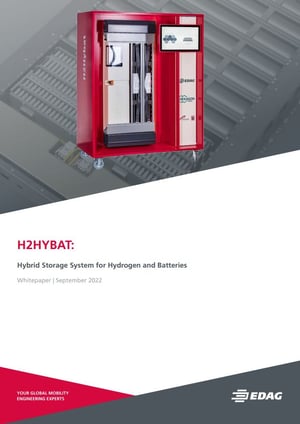Hybrid Storage System Consisting of Batteries and Hydrogen Tanks for all Applications

Considering the efforts being made to completely phase out the use of fossil fuels in the foreseeable future and the fact that "range anxiety" is still so widespread, hydrogen-based plug-in hybrid powertrains could steer a good middle course between pure battery electric passenger cars (BEVs) and fuel cell electric vehicles (FCEVs).
Such a concept combines the advantages of the two powertrain types in different application scenarios. For short journeys, the electric drive can easily be charged either at home or at work. This means that there is no need to drive to special charging points or filling stations. When traveling long distances, hydrogen filling stations can be used on the highways; the refueling process here takes much the same time as that for the combustion engine.
EDAG and Hexagon Purus joined forces in the H2Hybat project to research how an appropriate storage system would need to be designed. The aim was to develop a platform-neutral hybrid storage system suitable for installation in the underbody. This has room for ten hydrogen storage or battery modules, which can be configured in accordance with the individual user profile when the vehicle is purchased.
Among other things, the white paper "H2Hybat: Hybrid storage system for hydrogen and batteries" describes the technical challenges involved in developing this type of hybrid storage solution, with the conflicting demands of space requirements, cost efficiency and capacity. The measures employed to ensure fire protection and crash safety are described in detail. In addition, a number of different configurations of the H2Hybat storage system were compared using the WLTP cycle. You can download the white paper here.